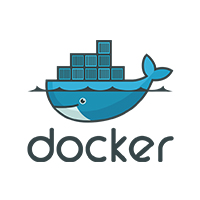PredictionIO


Please feel free to contact us
Go
PredictionIO is an open source machine learning server for software developers to create predictive features, such as personalization, recommendation and content discovery. Building a production-grade engine to predict users’ preferences and personalize content for them used to be time-consuming.
Apache PredictionIO is an open source machine learning server used to create predictive engines for any machine learning task. It shortens the time of machine learning application from lab to production by using customizable engine templates which can be built and deployed quickly. It provides the data collection and serving components, and abstracts underlying technology to expose an API that allows developers to focus on transformation components. Once the engine server of PredictionIO is deployed as a web service, it can respond to dynamic queries in real-time.
You can subscribe PredictionIO to an AWS Marketplace product and launch an instance from the PredictionIO product’s AMI using the Amazon EC2 launch wizard.
Step 1: SSH into Your Instance: Use the SSH command with the username ubuntu and the appropriate key pair to start the application.
Username: ubuntu
ssh -i path/to/ssh_key.pem ubuntu@instance-IP
Replace path/to/ssh_key.pem with the path to your SSH key file and instance-IP with the public IP address of your instance.
Step 2: Move to the predictionIO directory
cd /home/ubuntu/predictionio/docker
Step 3: Now to start the application run the below command
docker-compose -f docker-compose.yml \
-f pgsql/docker-compose.base.yml \
-f pgsql/docker-compose.meta.yml \
-f pgsql/docker-compose.event.yml \
-f pgsql/docker-compose.model.yml \
up -d
Step 4: Now to verify the service run the below command
export PATH=`pwd`/bin:$PATH
pio-docker status
You will get the following output if the application is working fine
[INFO] [Management$] Inspecting PredictionIO…
[INFO] [Management$] PredictionIO 0.13.0 is installed at /usr/share/predictionio
[INFO] [Management$] Inspecting Apache Spark…
[INFO] [Management$] Apache Spark is installed at /usr/share/spark-2.2.2-bin-hadoop2.7
[INFO] [Management$] Apache Spark 2.2.2 detected (meets minimum requirement of 1.3.0)
[INFO] [Management$] Inspecting storage backend connections…
[INFO] [Storage$] Verifying Meta Data Backend (Source: PGSQL)…
[INFO] [Storage$] Verifying Model Data Backend (Source: PGSQL)…
[INFO] [Storage$] Verifying Event Data Backend (Source: PGSQL)…
All your queries are important to us. Please feel free to connect.
24X7 support provided for all the customers.
We are happy to help you.
Submit your Query: https://miritech.com/contact-us/
Contact Numbers:
Contact E-mail:
Amazon EC2 enables “compute” in the cloud. Amazon EC2’s simple web service interface allows you to obtain and configure capacity with minimal friction. It provides you with complete control of your computing resources and lets you run on Amazon’s proven computing environment. Amazon EC2 reduces the time required to obtain and boot new server instances to minutes, allowing you to quickly scale capacity, both up and down, as your computing requirements change. Amazon EC2 changes the economics of computing by allowing you to pay only for capacity that you actually use.
No. You do not need an Elastic IP address for all your instances. By default, every instance comes with a private IP address and an internet routable public IP address. The private address is associated exclusively with the instance and is only returned to Amazon EC2 when the instance is stopped or terminated. The public address is associated exclusively with the instance until it is stopped, terminated or replaced with an Elastic IP address. These IP addresses should be adequate for many applications where you do not need a long lived internet routable end point. Compute clusters, web crawling, and backend services are all examples of applications that typically do not require Elastic IP addresses.
Amazon S3 provides a simple web service interface that you can use to store and retrieve any amount of data, at any time, from anywhere on the web. Using this web service, you can easily build applications that make use of Internet storage. Since Amazon S3 is highly scalable and you only pay for what you use, you can start small and grow your application as you wish, with no compromise on performance or reliability.
Amazon S3 is also designed to be highly flexible. Store any type and amount of data that you want; read the same piece of data a million times or only for emergency disaster recovery; build a simple FTP application, or a sophisticated web application such as the Amazon.com retail web site. Amazon S3 frees developers to focus on innovation instead of figuring out how to store their data
By default, Amazon RDS chooses the optimal configuration parameters for your DB Instance taking into account the instance class and storage capacity. However, if you want to change them, you can do so using the AWS Management Console, the Amazon RDS APIs, or the AWS Command Line Interface. Please note that changing configuration parameters from recommended values can have unintended effects, ranging from degraded performance to system crashes, and should only be attempted by advanced users who wish to assume these risks.
Amazon S3 is secure by default. Upon creation, only the resource owners have access to Amazon S3 resources they create. Amazon S3 supports user authentication to control access to data. You can use access control mechanisms such as bucket policies and Access Control Lists (ACLs) to selectively grant permissions to users and groups of users. The Amazon S3 console highlights your publicly accessible buckets, indicates the source of public accessibility, and also warns you if changes to your bucket policies or bucket ACLs would make your bucket publicly accessible.
You can securely upload/download your data to Amazon S3 via SSL endpoints using the HTTPS protocol. If you need extra security you can use the Server-Side Encryption (SSE) option to encrypt data stored at rest. You can configure your Amazon S3 buckets to automatically encrypt objects before storing them if the incoming storage requests do not have any encryption information. Alternatively, you can use your own encryption libraries to encrypt data before storing it in Amazon S3.
DB instances are simple to create, using either the AWS Management Console, Amazon RDS APIs, or AWS Command Line Interface. To launch a DB instance using the AWS Management Console, click “RDS,” then the Launch DB Instance button on the Instances tab. From there, you can specify the parameters for your DB instance including DB engine and version, license model, instance type, storage type and amount, and master user credentials.
You also have the ability to change your DB instance’s backup retention policy, preferred backup window, and scheduled maintenance window. Alternatively, you can create your DB instance using the CreateDBInstance API or create-db-instance command.
The Hadoop JDBC driver can be used to pull data out of Hadoop and then use the DataDirect JDBC Driver to bulk load the data into Oracle, DB2, SQL Server, Sybase, and other relational databases.
Front-end use of AI technologies to enable Intelligent Assistants for customer care is certainly key, but there are many other applications. One that I think is particularly interesting is the application of AI to directly support — rather than replace — contact center agents. Technologies such as natural language understanding and speech recognition can be used live during a customer service interaction with a human agent to look up relevant information and make suggestions about how to respond. AI technologies also have an important role in analytics. They can be used to provide an overview of activities within a call center, in addition to providing valuable business insights from customer activity.
There are many machine learning algorithms in use today, but the most popular ones are:
Infrastructure management
Support machine learning and data processing
Unify data from multiple platform
Quick build
Systematic processes
 PredictionIO
PredictionIO  docker
docker